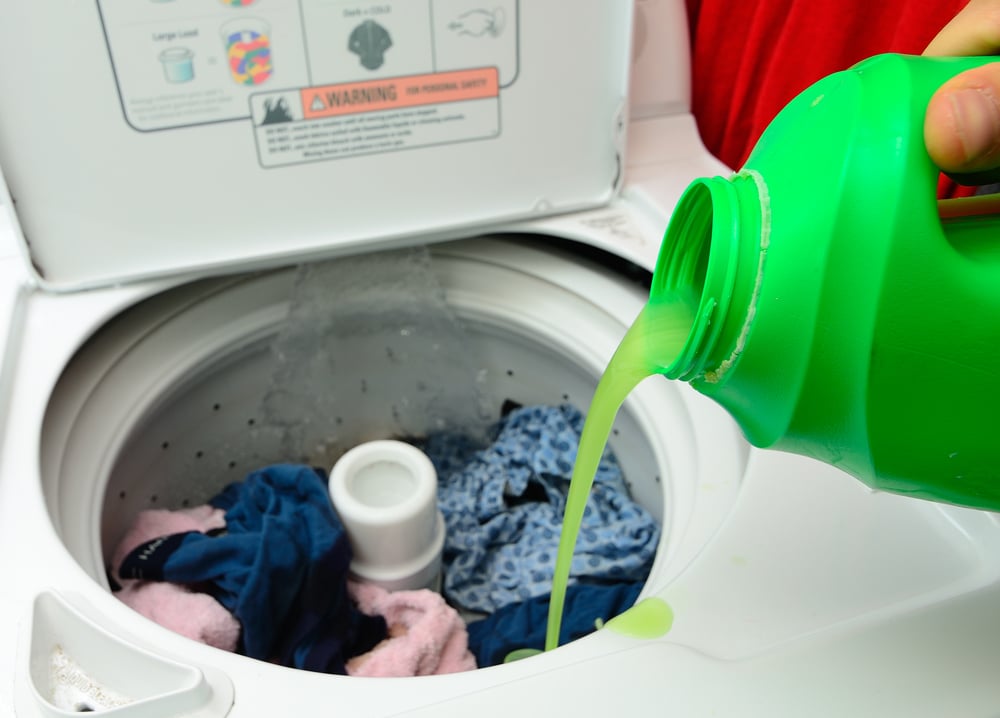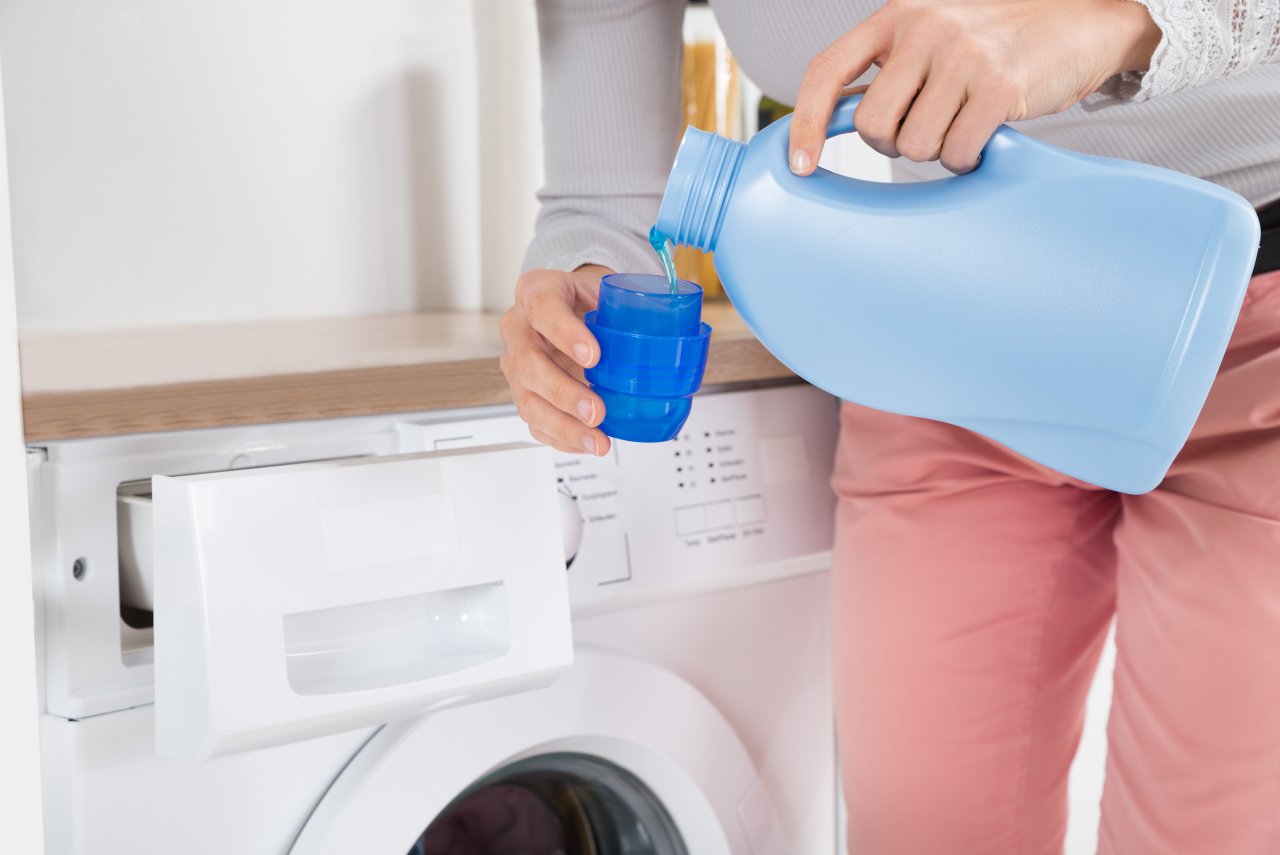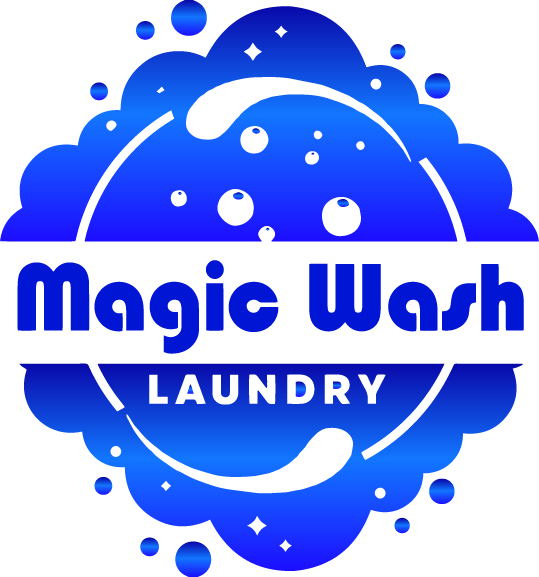Liquid laundry detergent is a common choice for many households. It offers convenience and effectiveness in cleaning clothes.
Knowing how to use liquid laundry detergent properly can make a big difference in your laundry routine. This guide will help you understand the best methods for using this cleaning product. Whether you have tough stains or just need to freshen up everyday clothes, liquid detergent can help.
You will learn about measuring the right amount, selecting the right wash cycle, and tips for getting the best results. With the right knowledge, you can ensure your clothes come out clean and smell great every time. Let’s dive into the best practices for using liquid laundry detergent effectively.
Read More: Washeterias Near Me / Laundromat Tyler TX / Best Laundry Services / Self Service Laundry / Top Rated Washers & Dryers
Read More: vitacures health blog, digital marketing services / cake gallery
Check our shop: Magic Wash Laundromat
How to Use Liquid Laundry Detergent?
Choosing The Right Detergent
Liquid laundry detergent is a common choice for washing clothes. It is easy to use and very effective. Choosing the right detergent is important for clean clothes and good care. Different types work better for various needs. This guide will help you understand how to use liquid laundry detergent and choose the right one.
Types Of Liquid Detergent
There are many types of liquid laundry detergents. Each has its own features. Here are some common types:
- Standard Liquid Detergent: Good for everyday use.
- High-Efficiency (HE) Detergent: Works in HE machines. Uses less water.
- Concentrated Liquid Detergent: More cleaning power in a smaller amount.
- Cold Water Detergent: Designed for cold wash cycles. Saves energy.
Choosing the right type can make a big difference. Here is a table to compare some features:
| Type | Best For | Water Usage |
|---|---|---|
| Standard | General washing | Normal |
| HE | HE machines | Less |
| Concentrated | Heavy stains | Less |
| Cold Water | Energy saving | Less |
Eco-friendly Options
Eco-friendly liquid detergents are a great choice for many reasons. They help protect the planet. These detergents use natural ingredients and are safe for the environment.
Some key benefits include:
- Biodegradable Ingredients: Break down easily in the environment.
- No Harmful Chemicals: Safe for sensitive skin.
- Less Packaging Waste: Often use recyclable materials.
Here are a few popular eco-friendly liquid detergents:
- Seventh Generation: Made with plant-based ingredients.
- Method: Known for its eco-friendly packaging.
- Ecover: Focuses on sustainable production.
Choosing eco-friendly options helps reduce your carbon footprint. It supports a healthier planet.
Measuring The Detergent
Liquid laundry detergent is an important part of washing clothes. Knowing how to measure it correctly helps get the best results. Proper measurement ensures clean clothes and prevents waste. This guide covers two main ways to measure liquid detergent: using the cap and scoop measurements.
Using The Cap
The cap of the detergent bottle is a simple tool for measuring. Most caps have markings to show how much detergent to use. Follow these steps:
- Check the label on the detergent bottle.
- Look for the lines on the cap.
- Fill the cap to the line that matches your load size.
Here is a quick reference for common load sizes:
| Load Size | Cap Measurement |
|---|---|
| Small | 1/4 cap full |
| Medium | 1/2 cap full |
| Large | Full cap |
Using the cap is fast and easy. Make sure not to overfill it. Too much detergent can leave residue on clothes.
Scoop Measurements
Scoops are another way to measure liquid laundry detergent. Some brands provide a scoop with their product. This scoop helps you use the right amount. Here’s how to use it:
- Find the scoop inside the detergent container.
- Check the size of the scoop.
- Fill the scoop according to the load size.
Here is a guide for scoop measurements:
| Load Size | Scoop Measurement |
|---|---|
| Small | 1/4 scoop |
| Medium | 1/2 scoop |
| Large | 1 full scoop |
Using a scoop allows for more precise measurement. Always follow the instructions on the detergent label. This helps avoid using too much detergent.
Preparing The Laundry
Using liquid laundry detergent can be simple and effective. Proper preparation of your laundry is important for good results. This includes sorting clothes and checking labels. These steps help keep clothes clean and in good shape.
Sorting Clothes
Sorting clothes before washing is essential. It helps prevent damage and keeps colors bright. Here are some tips for sorting:
- Separate colors: Keep whites, darks, and colors apart.
- Check fabric types: Group heavy fabrics with heavy ones.
- Look for stains: Treat stains before washing.
Sorting clothes helps in many ways:
- Prevents color bleeding.
- Reduces wear and tear on delicate items.
- Ensures all clothes get clean.
Here’s a simple sorting table:
| Clothing Type | Washing Instructions |
|---|---|
| Whites | Wash in hot water. |
| Darks | Wash in cold water. |
| Colors | Wash in cold water. |
| Delicates | Use a gentle cycle. |
Checking Labels
Checking labels on clothes is very important. Labels provide vital information. They tell you how to wash and dry the item. Ignoring these labels can cause damage.
Here are key things to look for:
- Washing temperature: Know if it can be washed in hot or cold water.
- Drying instructions: Check if it can go in the dryer.
- Ironing guidelines: Some fabrics need low heat or no ironing.
Understanding these labels can prevent mistakes:
- Wrong washing can shrink clothes.
- High heat can damage fabrics.
- Not following instructions can fade colors.
Here’s a sample label key:
| Symbol | Meaning |
|---|---|
| Washing Machine | Can be washed in a machine. |
| Iron | Can be ironed. |
| Circle with a dot | Dry clean only. |

Credit: www.frontdoor.com
Loading The Washer
Using liquid laundry detergent can make washing clothes easy. Knowing how to load your washer correctly is important. Each type of washing machine has its own way to use detergent. This guide helps you understand how to use liquid laundry detergent in both top-loading and front-loading machines.
Top-loading Machines
Top-loading machines are common in many homes. They have a lid on the top and usually hold more clothes. Using liquid laundry detergent in these machines is simple. Here are some easy steps:
- Open the lid of the washing machine.
- Add the detergent to the designated area. This is often marked.
- Fill the washer with clothes, but do not overload.
- Set the water level according to the load size.
- Choose the wash cycle that fits your load.
It is important to measure the right amount of detergent. Too much detergent can cause suds and may not rinse well. Most brands suggest using 1/4 to 1/3 cup of liquid detergent for regular loads. Check the label for specific amounts.
| Load Size | Detergent Amount |
|---|---|
| Small | 1/4 cup |
| Medium | 1/3 cup |
| Large | 1/2 cup |
Front-loading Machines
Front-loading machines are often more efficient. They use less water and energy. Using liquid laundry detergent in these machines needs a slightly different approach. Follow these steps:
- Open the door of the washing machine.
- Locate the detergent drawer. It usually has three compartments.
- Pour detergent into the compartment marked for liquid detergent.
- Load your clothes into the drum. Do not pack tightly.
- Select the wash cycle based on fabric type.
For front-loaders, use the right amount of detergent as well. Too much can lead to buildup in the machine. A good rule is to use 2 tablespoons for small loads and 1/4 cup for larger loads. Always check the detergent label for guidelines.
| Load Size | Detergent Amount |
|---|---|
| Small | 2 tablespoons |
| Medium | 3 tablespoons |
| Large | 1/4 cup |
Adding The Detergent
Using liquid laundry detergent can make washing clothes easier. Adding the detergent correctly is important for clean clothes. There are two main ways to add liquid detergent. You can put it directly in the drum or use the dispenser drawer. Each method has its own benefits.
Directly In Drum
Adding detergent directly in the drum is simple. This method ensures that the detergent mixes well with water. Here are some easy steps to follow:
- Measure the amount of liquid detergent you need.
- Pour the detergent into the empty drum.
- Load your clothes into the drum.
- Choose your wash cycle and start the machine.
Using this method can be effective. It allows the detergent to dissolve quickly. This helps to remove dirt and stains better. Make sure to follow the instructions on the detergent bottle. Here is a quick reference table:
| Load Size | Detergent Amount |
|---|---|
| Small Load | 1/4 cup |
| Medium Load | 1/2 cup |
| Large Load | 3/4 cup |
Using Dispenser Drawer
Using the dispenser drawer is another option. Many washing machines have a specific section for detergent. This method is also easy and convenient. Follow these steps:
- Open the dispenser drawer.
- Find the section labeled for liquid detergent.
- Pour the measured detergent into this section.
- Close the drawer and add your clothes.
This method helps dispense detergent at the right time. It mixes with water during the wash cycle. It is important to avoid overfilling the drawer. This can cause leaks and mess. Here are some tips for using the dispenser:
- Check the machine’s manual for specific instructions.
- Do not use too much detergent.
- Keep the dispenser clean to avoid build-up.

Credit: www.persil.com
Choosing The Right Cycle
Using liquid laundry detergent can make laundry easier. Choosing the right cycle is very important. Different fabrics need different care. Knowing how to use your washing machine helps you keep your clothes looking good.
Normal Cycle
The normal cycle is best for most clothes. It works well with cotton and polyester. This cycle uses a fast wash and rinse. Here are some key points about the normal cycle:
- Good for everyday laundry.
- Great for sturdy fabrics.
- Washes clothes quickly.
Using the normal cycle saves time. It is also energy efficient. Here is a simple table showing what fabrics to wash in this cycle:
| Fabric Type | Wash Temperature |
|---|---|
| Cotton | Warm or Hot |
| Polyester | Cold or Warm |
| Denim | Cold |
Always check the clothing labels. They give washing instructions. Following these instructions helps keep clothes nice.
Delicate Cycle
The delicate cycle is for fragile fabrics. This cycle uses gentle washing. It helps prevent damage. Here are some fabrics that need this cycle:
- Lace
- Silk
- Wool
Using the delicate cycle is important for special clothes. It helps them last longer. Below is a table showing the best temperature for delicate fabrics:
| Fabric Type | Wash Temperature |
|---|---|
| Lace | Cold |
| Silk | Cold |
| Wool | Cold |
Always use a gentle detergent. This helps keep delicate clothes safe. Checking the labels is very important. It guides the right washing method.
Drying Your Clothes
Using liquid laundry detergent can make washing clothes easier. After washing, drying your clothes is important. There are two common methods: air drying and using a dryer. Each method has its benefits. Knowing how to dry clothes properly helps them last longer.
Air Drying
Air drying is a simple way to dry clothes. It helps save energy and is better for the environment. Here are some key points about air drying:
- Choose a good spot: Find a place with good air flow.
- Use a clothesline or drying rack: Both work well for drying.
- Space clothes apart: This allows air to circulate freely.
- Check the weather: A sunny day helps clothes dry faster.
Air drying can take longer than using a dryer. However, it is gentle on fabric. This method can help keep colors bright and prevent shrinking. It’s also a great way to dry delicate items. Always turn clothes inside out to protect colors.
Using A Dryer
Using a dryer is fast and convenient. It is perfect for busy lives. Here are some tips for using a dryer:
- Sort clothes: Separate heavy items from light ones.
- Check labels: Some clothes need special care.
- Use dryer balls: They help clothes dry faster and reduce wrinkles.
- Set the right temperature: Use low heat for delicate fabrics.
Dryers have different settings. Here’s a simple table of common settings:
| Setting | Best For |
|---|---|
| Low Heat | Delicates and active wear |
| Medium Heat | Casual clothes and sheets |
| High Heat | Towels and heavy items |
After drying, remove clothes right away. This helps to prevent wrinkles. Always clean the lint filter before starting the dryer. This keeps it safe and efficient. Using a dryer is quick and easy, making it a popular choice.
Storing Leftover Detergent
Liquid laundry detergent is a popular choice for washing clothes. It is easy to use and effective. Properly storing leftover detergent is important. This ensures it stays fresh and works well. Understanding how to store it can help you save money and avoid waste.
Proper Sealing
After using liquid laundry detergent, sealing the container is key. A good seal keeps the detergent safe from air and moisture. Here are some tips for proper sealing:
- Always close the cap tightly after each use.
- Check for any cracks in the container.
- Consider using a plastic wrap under the cap for extra protection.
Proper sealing can also prevent spills and leaks. If detergent spills, it can create a mess. Use these steps to keep your space clean:
| Step | Action |
|---|---|
| 1 | Close the cap tightly. |
| 2 | Store upright to avoid leaks. |
| 3 | Check the seal before each use. |
Cool, Dry Place
Storing detergent in a cool, dry place is important. High heat and moisture can damage the detergent. It can lose its cleaning power if not stored correctly. Here are some ideal storage spots:
- A shelf in a laundry room.
- A cupboard away from heat sources.
- A pantry or closet that stays dry.
Consider these tips for the best storage:
- Avoid placing detergent near washing machines.
- Keep it away from windows and direct sunlight.
- Do not store it in a bathroom where it can get humid.
Choosing the right place helps maintain the detergent’s quality. This ensures your laundry stays fresh and clean.

Credit: www.youtube.com
Frequently Asked Questions
Where Do I Put The Liquid Detergent In A Washing Machine?
Place liquid detergent in the designated compartment of your washing machine’s detergent drawer. This compartment is usually marked with a symbol for liquid detergent. Follow the manufacturer’s instructions for the correct amount to use for each load. Avoid pouring detergent directly onto clothes.
How Do You Wash Clothes With Liquid Detergent?
To wash clothes with liquid detergent, first, separate colors and whites. Measure the detergent according to the bottle instructions. Pour it directly into the washing machine drum or detergent dispenser. Load the clothes, select the appropriate cycle, and start the machine.
Enjoy fresh, clean laundry!
Do You Pour Liquid Detergent Directly On Clothes?
Pour liquid detergent in the washing machine’s designated dispenser. Pouring it directly on clothes can cause uneven cleaning and potential staining. Always follow the manufacturer’s instructions for best results. This ensures optimal detergent distribution and fabric care during the wash cycle.
Can I Put Liquid Detergent Straight In The Drum?
Yes, you can put liquid detergent directly in the drum of your washing machine. This method works well, especially for high-efficiency washers. Ensure you use the correct amount to avoid excess suds. Check your machine’s manual for specific recommendations.
Conclusion
Using liquid laundry detergent is simple and effective. Measure the right amount for your load. Pour it directly into the washer. This helps to clean your clothes well. Remember to choose the right detergent for your needs. Stain removers and fabric softeners can boost your wash.
Always check the labels for instructions. Follow these tips for fresh, clean laundry every time. Enjoy the satisfaction of clean clothes. With practice, doing laundry will feel easier. Start today and see the difference.


